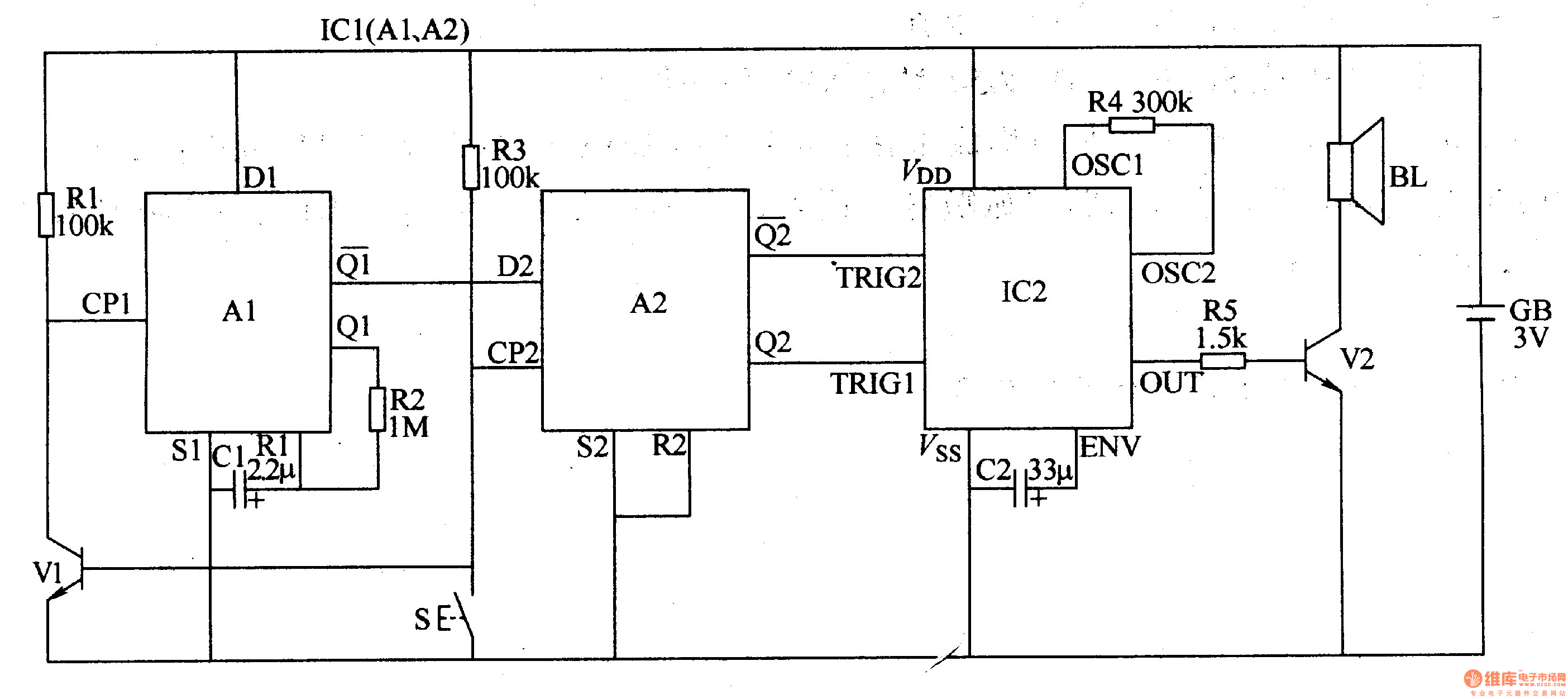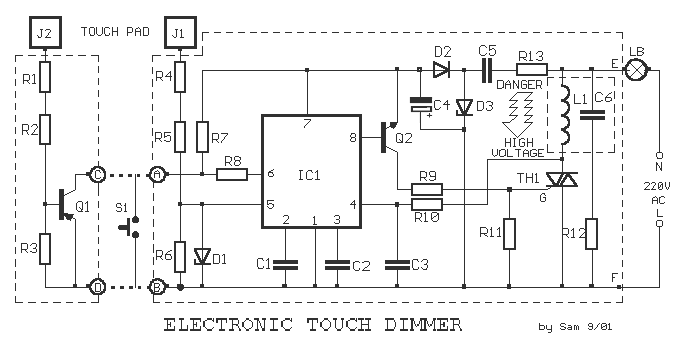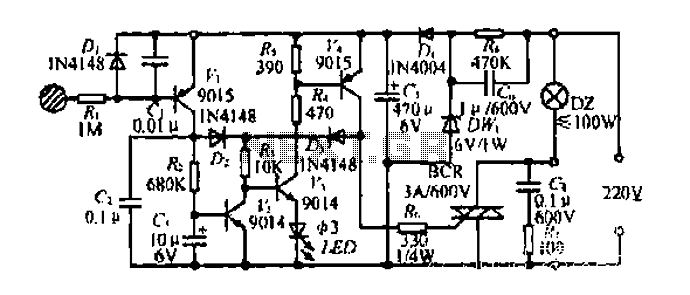
Two-tone electronic doorbell 1

The two-tone electronic doorbell circuit consists of an input trigger circuit and an audio output circuit. The input trigger circuit includes a doorbell button (S), a transistor (V1), resistors (R1-R3), a capacitor (C1), and a dual D flip-flop integrated circuit (IC1, A1, A2). The audio output circuit comprises the audio output circuitry.
The two-tone electronic doorbell circuit operates by utilizing a combination of analog and digital components to produce distinct audio signals in response to the activation of the doorbell button. When the button (S) is pressed, it triggers the input circuit, which initiates the operation of the transistor (V1). This transistor acts as a switch, allowing current to flow through the resistors (R1-R3) and charging the capacitor (C1).
The dual D flip-flop integrated circuit (IC1) plays a crucial role in generating the two-tone sound. It is configured to alternate between two different output states, each corresponding to a specific audio tone. The outputs A1 and A2 are connected to the audio output circuit, which typically includes an amplifier and a speaker. The audio output circuit is responsible for converting the digital signals from the flip-flop into audible sounds.
The design of the circuit ensures that the two tones produced are distinct and recognizable, enhancing the functionality of the doorbell. The choice of components, such as the specific values of the resistors and capacitor, as well as the characteristics of the transistor, can be adjusted to fine-tune the sound output and response time of the doorbell. Overall, this circuit provides a reliable and efficient solution for a two-tone electronic doorbell system.The two-tone electronic doorbell circuit is composed of the input trigger circuit and audio output circuit, ans it is shown in Figure 3-107. The input trigger circuit is composed of the doorbell button S, transistor V1, resistors Rl-R3, capacitor Cl and dual D flip-flop integrated circuit ICl (Al, A2).
Audio output circuit consists of the audio output circui.. 🔗 External reference
The two-tone electronic doorbell circuit operates by utilizing a combination of analog and digital components to produce distinct audio signals in response to the activation of the doorbell button. When the button (S) is pressed, it triggers the input circuit, which initiates the operation of the transistor (V1). This transistor acts as a switch, allowing current to flow through the resistors (R1-R3) and charging the capacitor (C1).
The dual D flip-flop integrated circuit (IC1) plays a crucial role in generating the two-tone sound. It is configured to alternate between two different output states, each corresponding to a specific audio tone. The outputs A1 and A2 are connected to the audio output circuit, which typically includes an amplifier and a speaker. The audio output circuit is responsible for converting the digital signals from the flip-flop into audible sounds.
The design of the circuit ensures that the two tones produced are distinct and recognizable, enhancing the functionality of the doorbell. The choice of components, such as the specific values of the resistors and capacitor, as well as the characteristics of the transistor, can be adjusted to fine-tune the sound output and response time of the doorbell. Overall, this circuit provides a reliable and efficient solution for a two-tone electronic doorbell system.The two-tone electronic doorbell circuit is composed of the input trigger circuit and audio output circuit, ans it is shown in Figure 3-107. The input trigger circuit is composed of the doorbell button S, transistor V1, resistors Rl-R3, capacitor Cl and dual D flip-flop integrated circuit ICl (Al, A2).
Audio output circuit consists of the audio output circui.. 🔗 External reference





